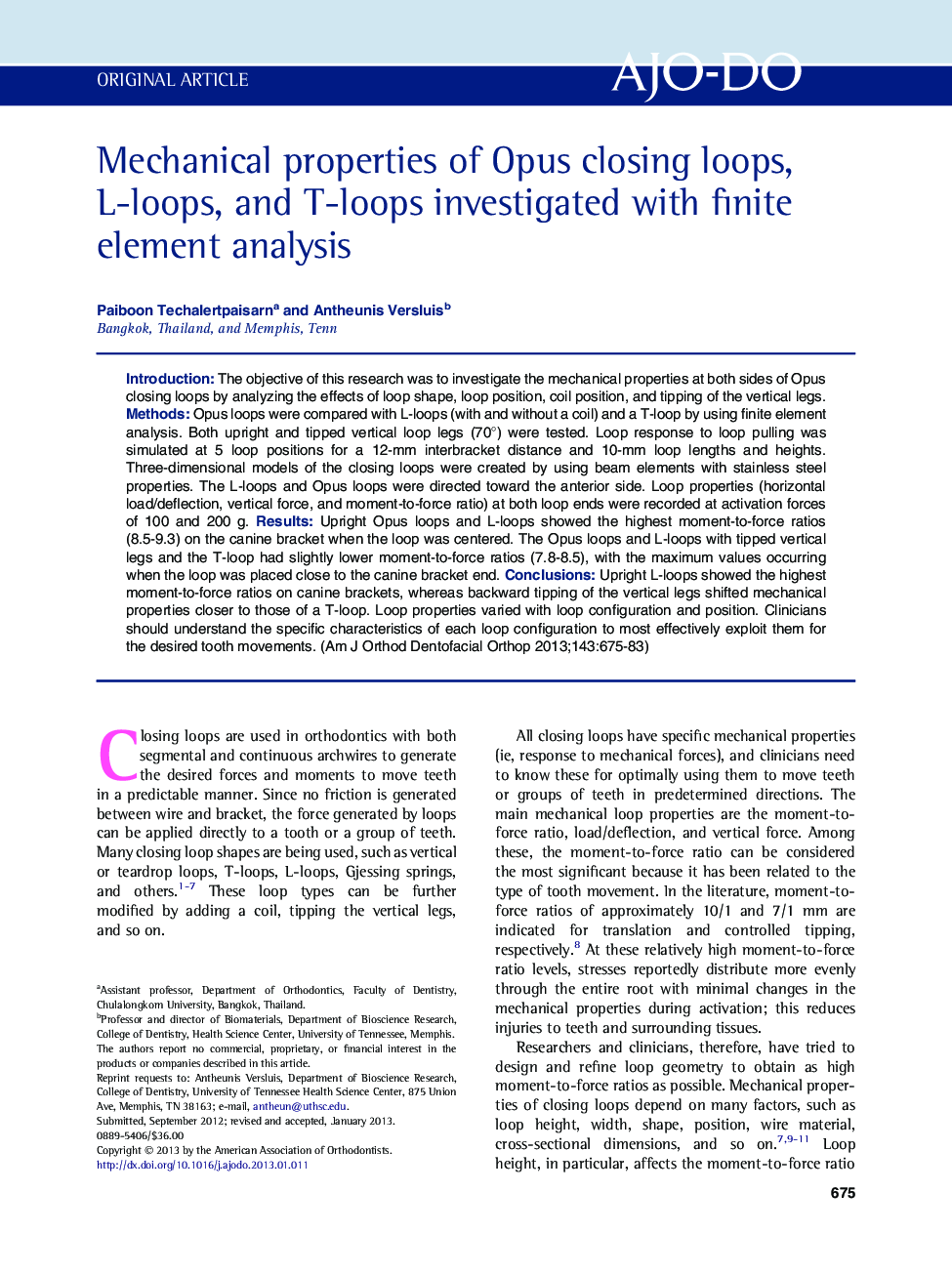| Article ID | Journal | Published Year | Pages | File Type |
|---|---|---|---|---|
| 3116617 | American Journal of Orthodontics and Dentofacial Orthopedics | 2013 | 9 Pages |
IntroductionThe objective of this research was to investigate the mechanical properties at both sides of Opus closing loops by analyzing the effects of loop shape, loop position, coil position, and tipping of the vertical legs.MethodsOpus loops were compared with L-loops (with and without a coil) and a T-loop by using finite element analysis. Both upright and tipped vertical loop legs (70°) were tested. Loop response to loop pulling was simulated at 5 loop positions for a 12-mm interbracket distance and 10-mm loop lengths and heights. Three-dimensional models of the closing loops were created by using beam elements with stainless steel properties. The L-loops and Opus loops were directed toward the anterior side. Loop properties (horizontal load/deflection, vertical force, and moment-to-force ratio) at both loop ends were recorded at activation forces of 100 and 200 g.ResultsUpright Opus loops and L-loops showed the highest moment-to-force ratios (8.5-9.3) on the canine bracket when the loop was centered. The Opus loops and L-loops with tipped vertical legs and the T-loop had slightly lower moment-to-force ratios (7.8-8.5), with the maximum values occurring when the loop was placed close to the canine bracket end.ConclusionsUpright L-loops showed the highest moment-to-force ratios on canine brackets, whereas backward tipping of the vertical legs shifted mechanical properties closer to those of a T-loop. Loop properties varied with loop configuration and position. Clinicians should understand the specific characteristics of each loop configuration to most effectively exploit them for the desired tooth movements.
